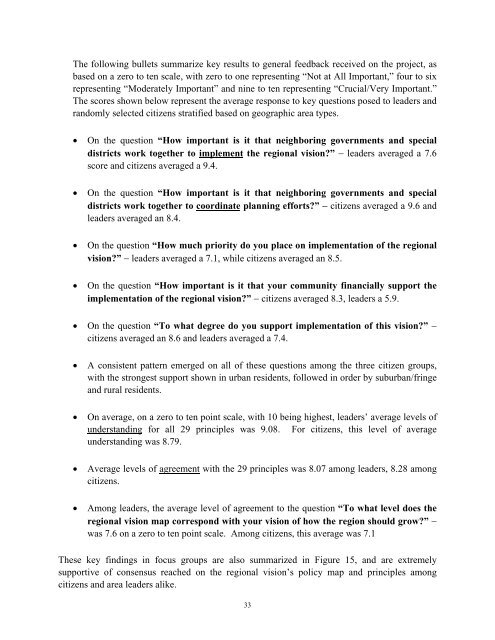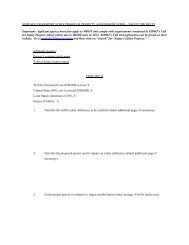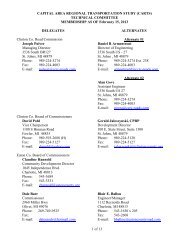Summary Report for the Lansing Metropolitan Area - Tri-County ...
Summary Report for the Lansing Metropolitan Area - Tri-County ...
Summary Report for the Lansing Metropolitan Area - Tri-County ...
You also want an ePaper? Increase the reach of your titles
YUMPU automatically turns print PDFs into web optimized ePapers that Google loves.
The following bullets summarize key results to general feedback received on <strong>the</strong> project, as<br />
based on a zero to ten scale, with zero to one representing “Not at All Important,” four to six<br />
representing “Moderately Important” and nine to ten representing “Crucial/Very Important.”<br />
The scores shown below represent <strong>the</strong> average response to key questions posed to leaders and<br />
randomly selected citizens stratified based on geographic area types.<br />
• On <strong>the</strong> question “How important is it that neighboring governments and special<br />
districts work toge<strong>the</strong>r to implement <strong>the</strong> regional vision?” − leaders averaged a 7.6<br />
score and citizens averaged a 9.4.<br />
• On <strong>the</strong> question “How important is it that neighboring governments and special<br />
districts work toge<strong>the</strong>r to coordinate planning ef<strong>for</strong>ts?” − citizens averaged a 9.6 and<br />
leaders averaged an 8.4.<br />
• On <strong>the</strong> question “How much priority do you place on implementation of <strong>the</strong> regional<br />
vision?” − leaders averaged a 7.1, while citizens averaged an 8.5.<br />
• On <strong>the</strong> question “How important is it that your community financially support <strong>the</strong><br />
implementation of <strong>the</strong> regional vision?” − citizens averaged 8.3, leaders a 5.9.<br />
• On <strong>the</strong> question “To what degree do you support implementation of this vision?” −<br />
citizens averaged an 8.6 and leaders averaged a 7.4.<br />
• A consistent pattern emerged on all of <strong>the</strong>se questions among <strong>the</strong> three citizen groups,<br />
with <strong>the</strong> strongest support shown in urban residents, followed in order by suburban/fringe<br />
and rural residents.<br />
• On average, on a zero to ten point scale, with 10 being highest, leaders’ average levels of<br />
understanding <strong>for</strong> all 29 principles was 9.08. For citizens, this level of average<br />
understanding was 8.79.<br />
• Average levels of agreement with <strong>the</strong> 29 principles was 8.07 among leaders, 8.28 among<br />
citizens.<br />
• Among leaders, <strong>the</strong> average level of agreement to <strong>the</strong> question “To what level does <strong>the</strong><br />
regional vision map correspond with your vision of how <strong>the</strong> region should grow?” −<br />
was 7.6 on a zero to ten point scale. Among citizens, this average was 7.1<br />
These key findings in focus groups are also summarized in Figure 15, and are extremely<br />
supportive of consensus reached on <strong>the</strong> regional vision’s policy map and principles among<br />
citizens and area leaders alike.<br />
33






